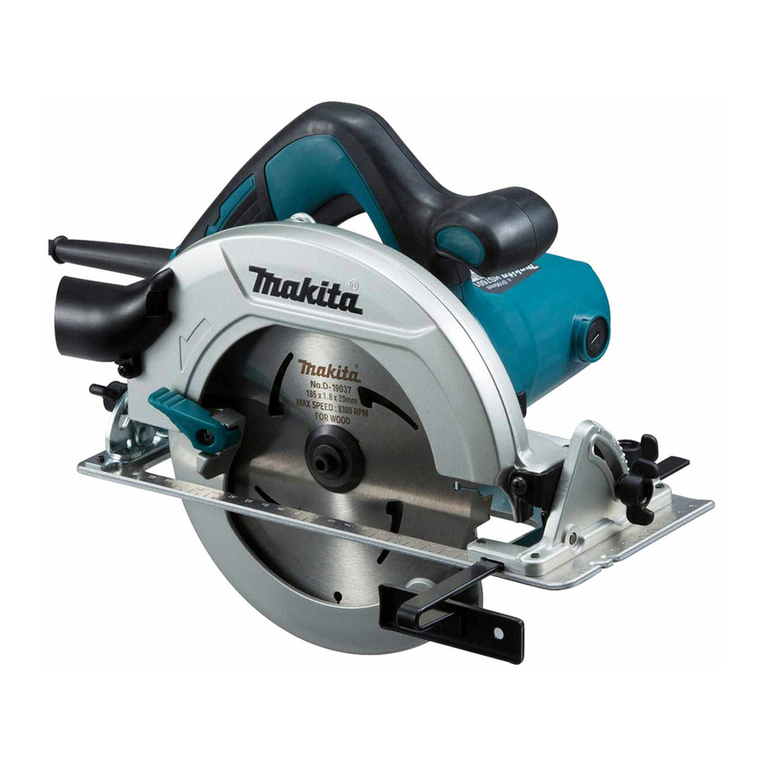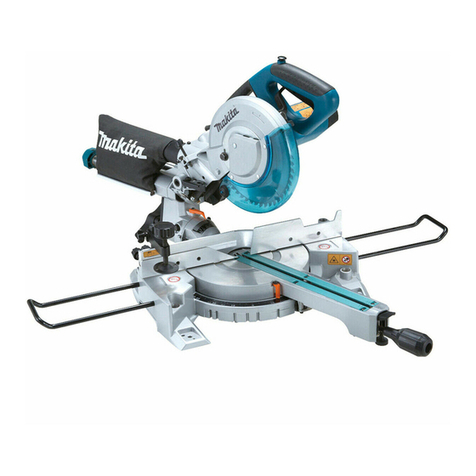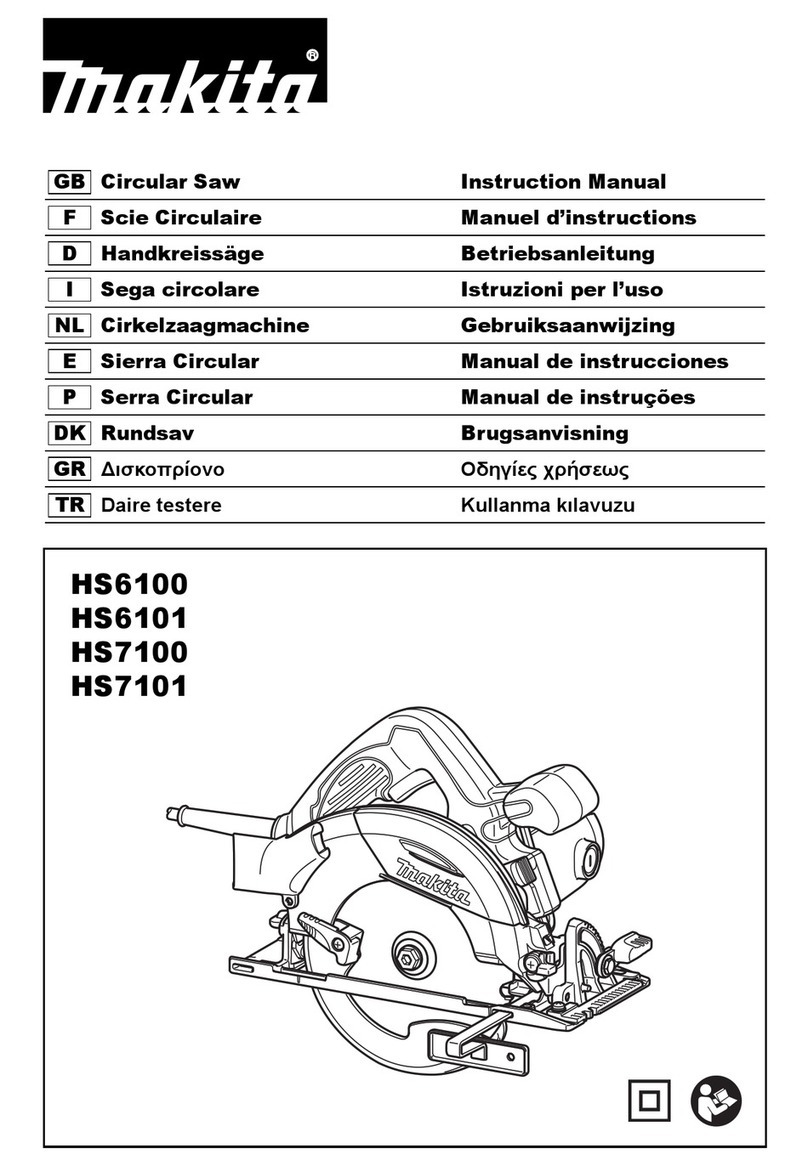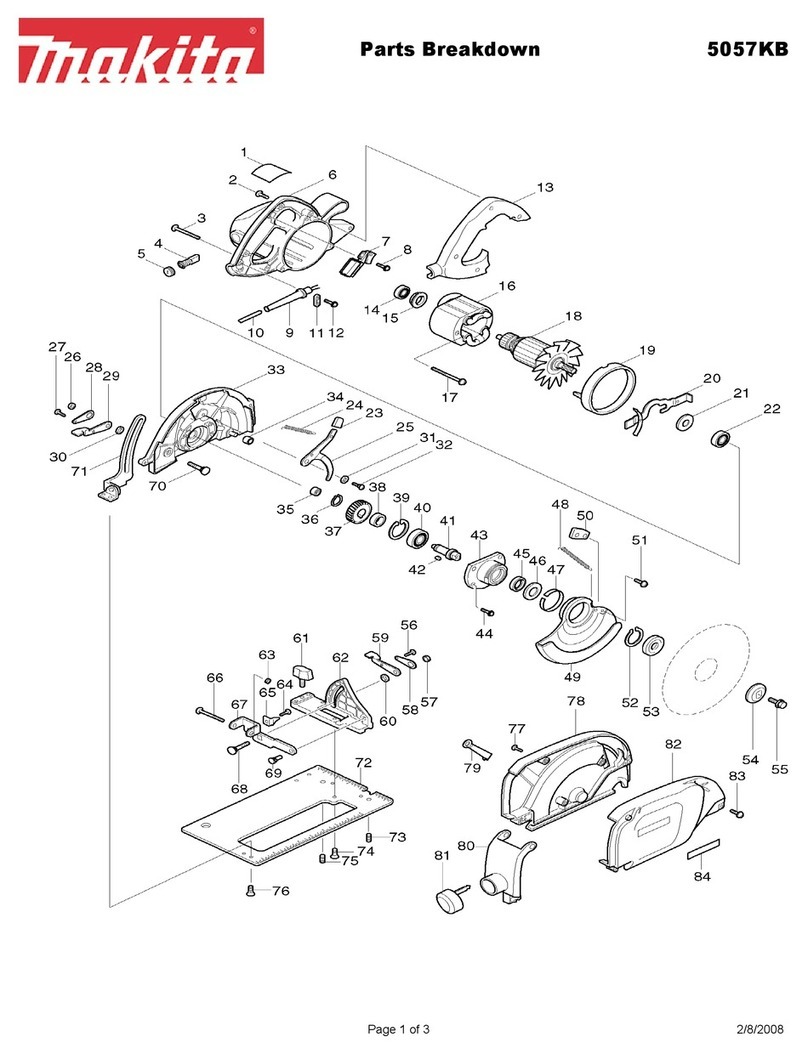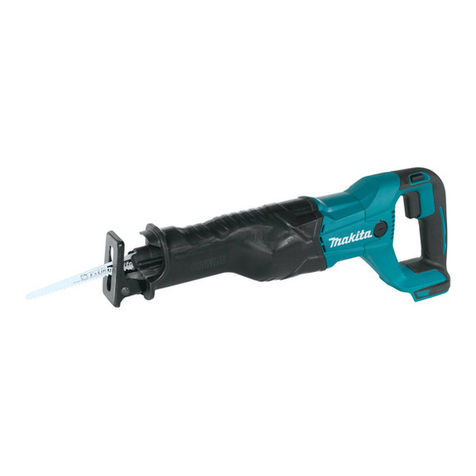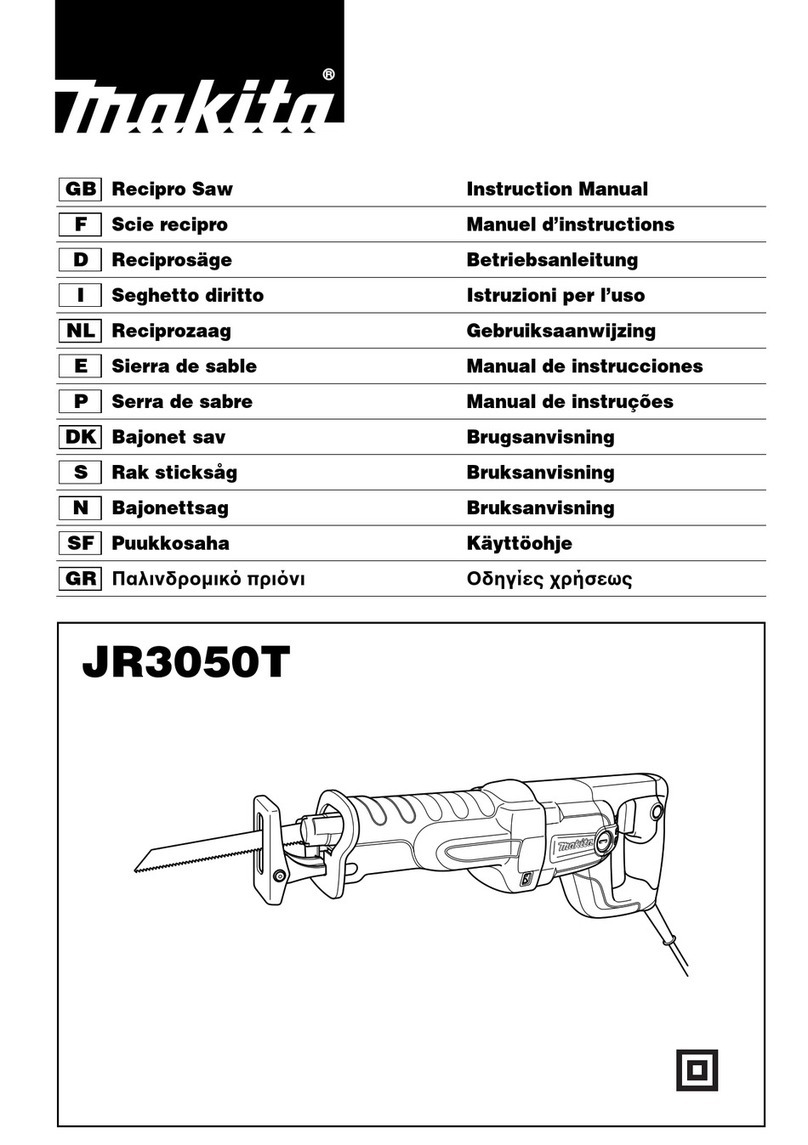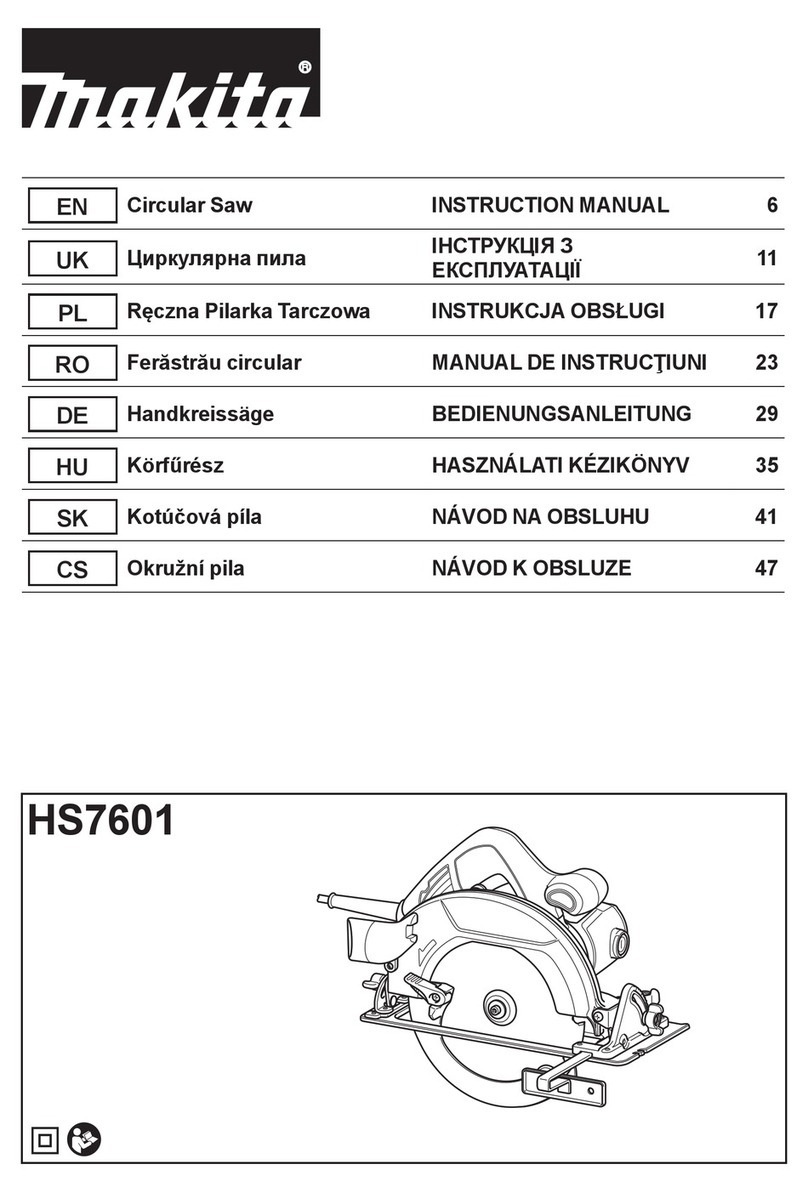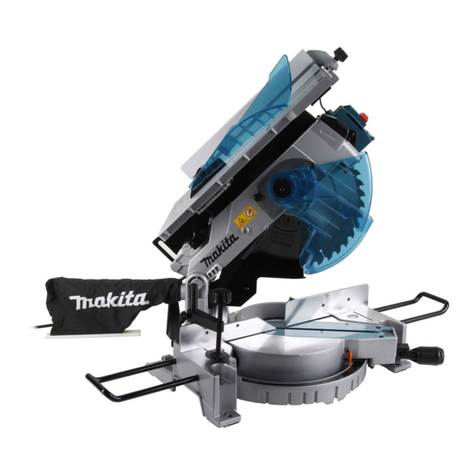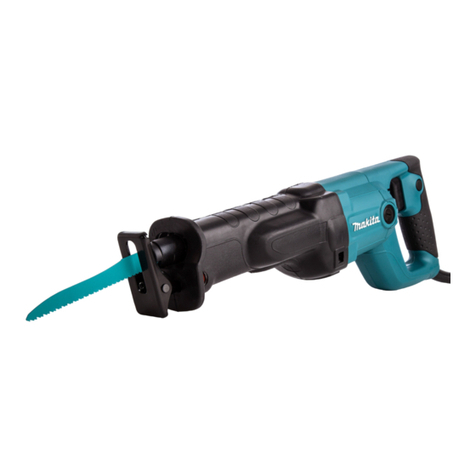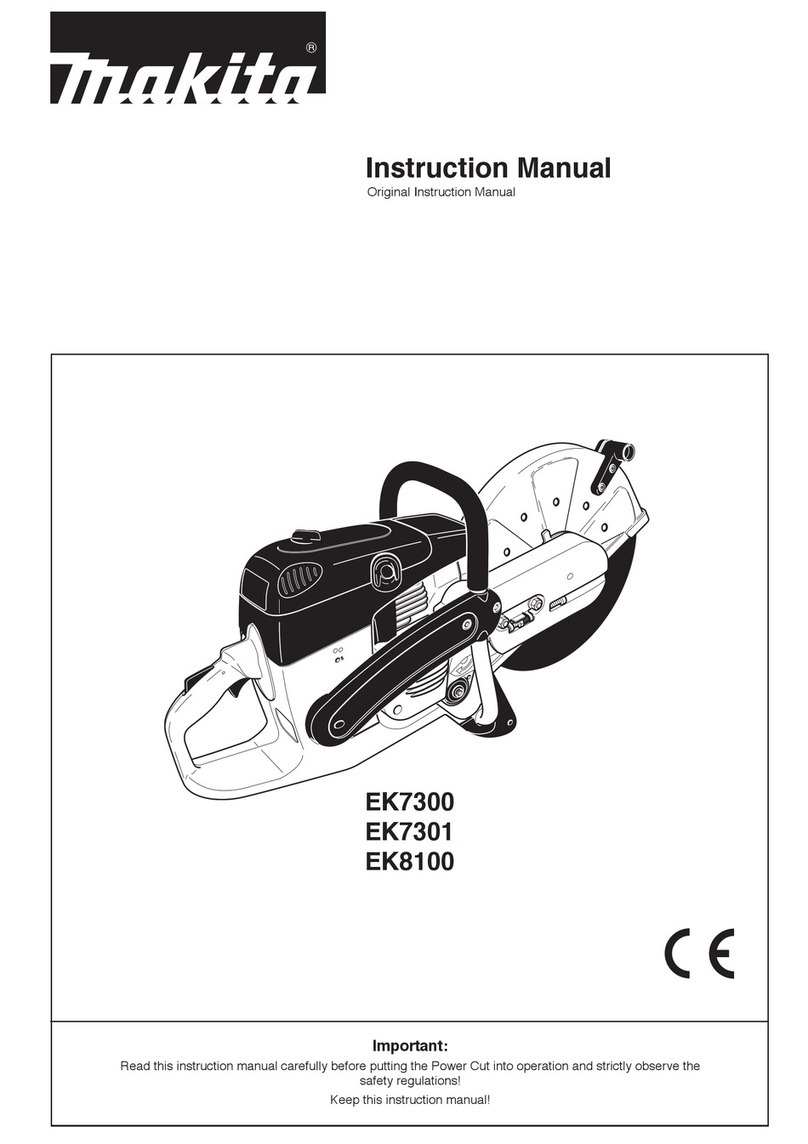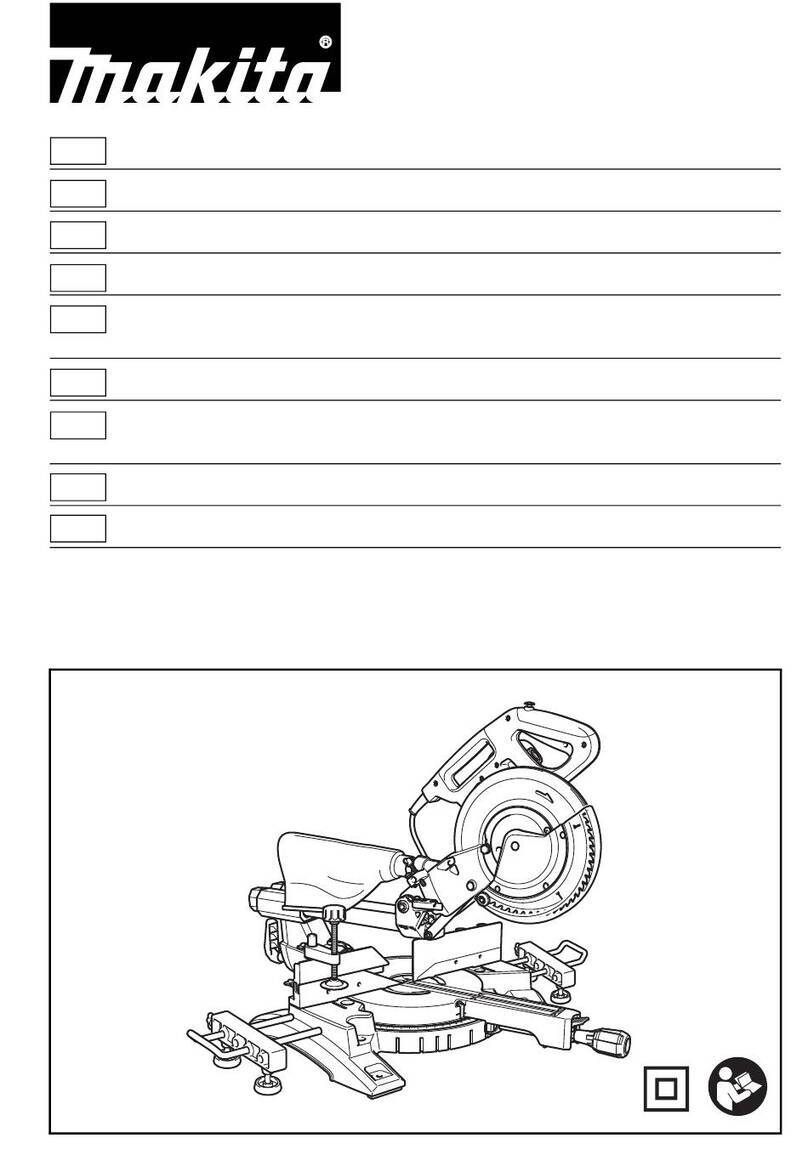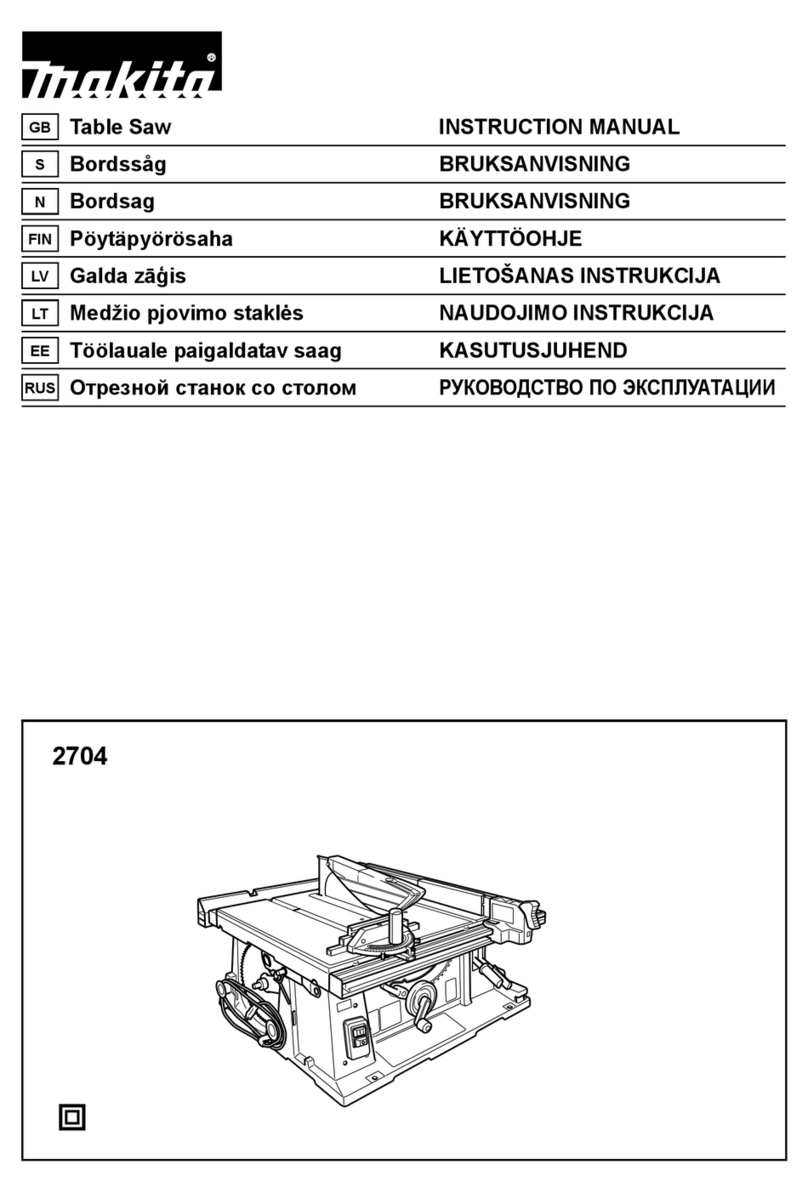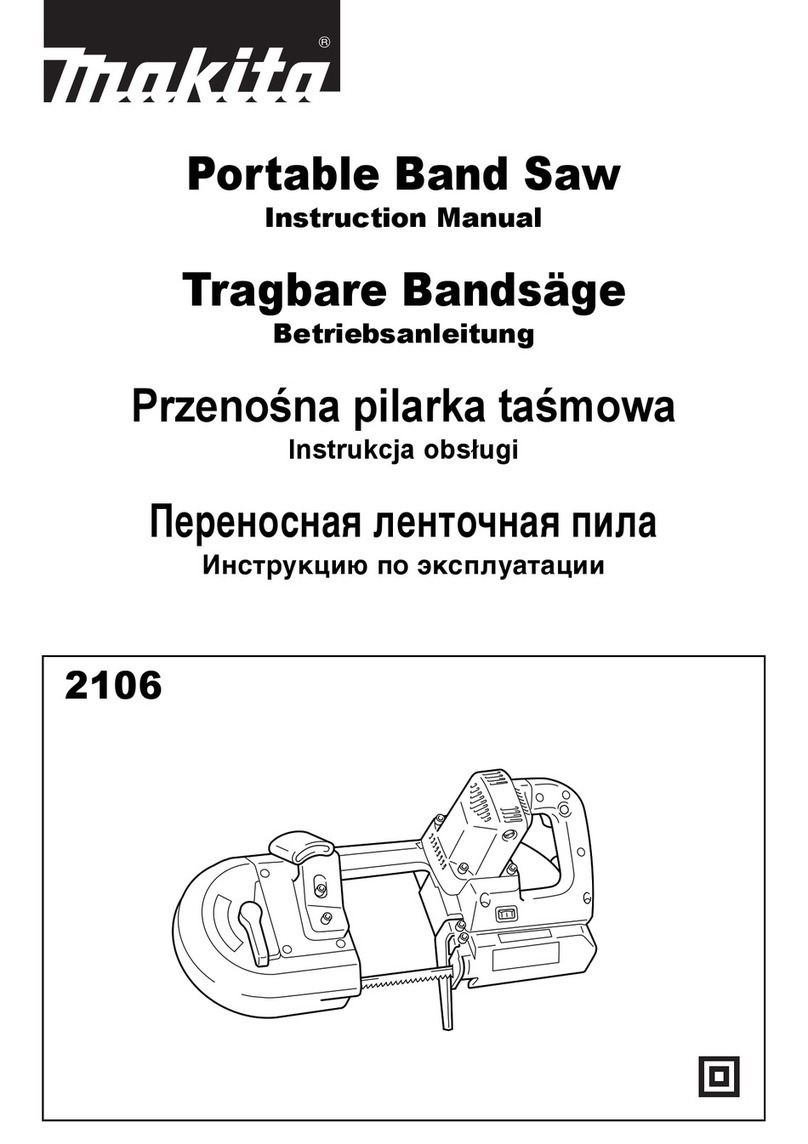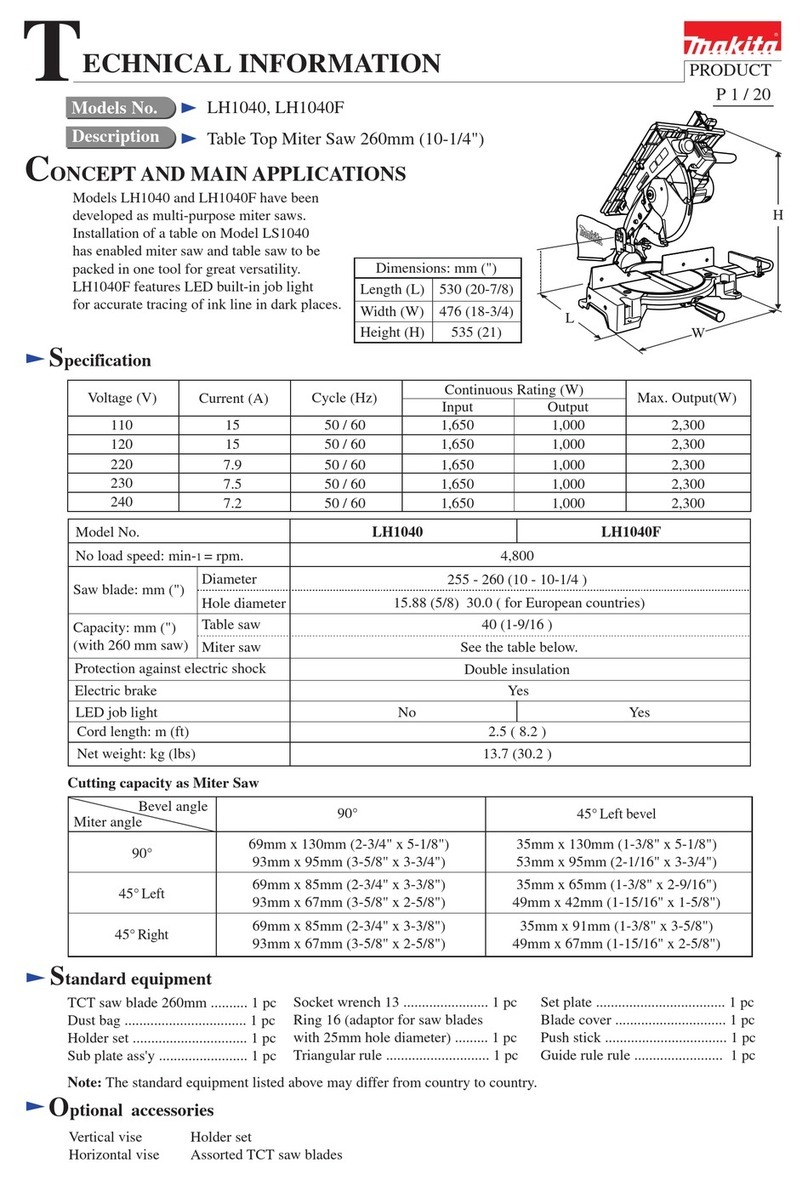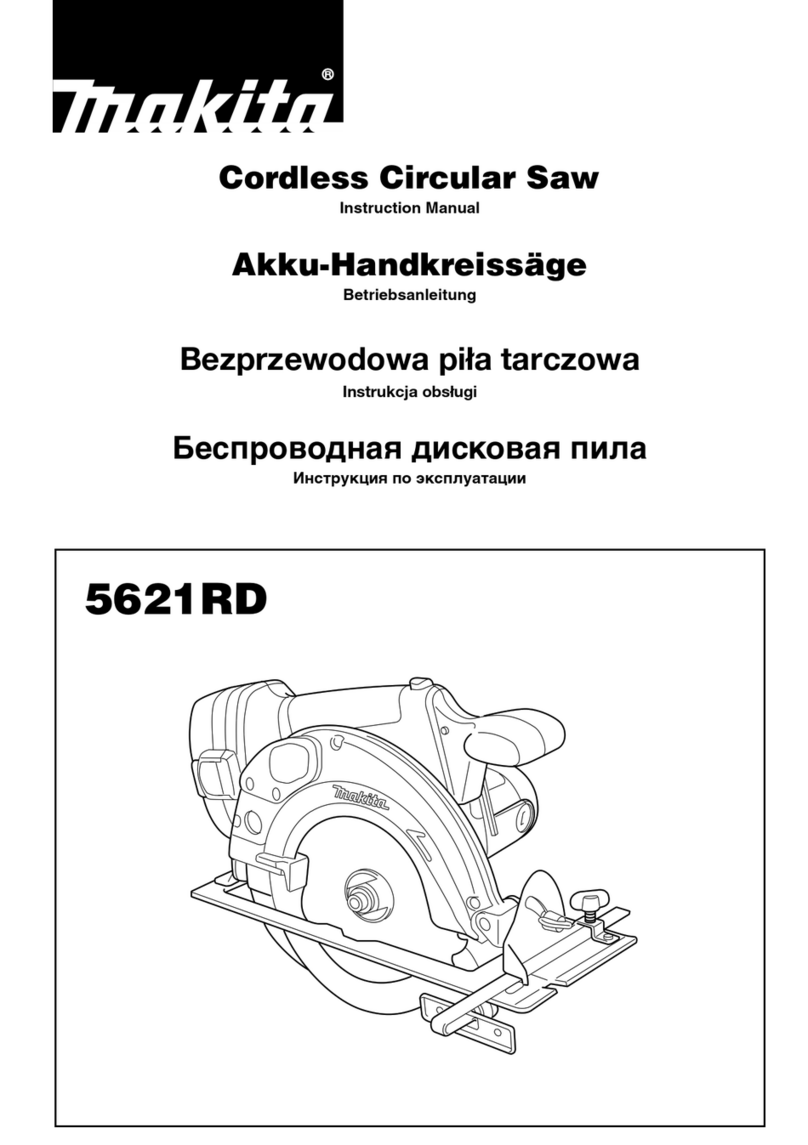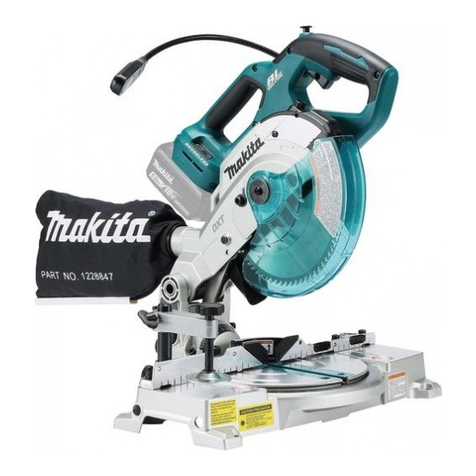
3
will operate properly and perform its intended
function - check for alignment of moving parts,
binding of moving parts, breakage of parts,
mounting, and any other conditions that may
affect its operation. A guard or other part that is
damaged should be properly repaired or
replaced.
20. DIRECTION OF FEED. Feed work into a blade or
cutter against the direction of rotation of the
blade or cutter only.
21. NEVER LEAVE TOOL RUNNING UNATTENDED.
TURN POWER OFF. Don’t leave tool until it
comes to a complete stop.
22. REPLACEMENT PARTS. When servicing use
only identical replacement parts.
23. POLARIZED PLUGS. To reduce the risk of elec-
tric shock, this equipment has a polarized plug
(one blade is wider than the other). This plug will
fit in a polarized outlet only one way. If the plug
does not fit fully in the outlet, reverse the plug. If
it still does not fit, contact a qualified electrician
to install the proper outlet. Do not change the
plug in any way.
VOLTAGE WARNING: Before connecting the tool to a
power source (receptacle, outlet, etc.) be sure the volt-
age supplied is the same as that specified on the name-
plate of the tool. A power source with voltage greater
than that specified for the tool can result in SERIOUS
INJURY to the user –as well as damage to the tool. If in
doubt, DO NOT PLUG IN THE TOOL. Using a power
source with voltage less than the nameplate rating is
harmful to the motor.
USE PROPER EXTENSION CORD. Make sure your
extension cord is in good condition. When using an
extension cord, be sure to use one heavy enough to
carry the current your product will draw. An undersized
cord will cause a drop in line voltage resulting in loss of
power and overheating. Table 1 shows the correct size to
use depending on cord length and nameplate ampere
rating. If in doubt, use the next heavier gage. The smaller
the gage number, the heavier the cord.
ADDITIONAL SAFETY RULES
USB059-1
DO NOT let comfort or familiarity with
product (gained from repeated use)
replace strict adherence to table saw
safety rules. If you use this tool unsafely
or incorrectly, you can suffer serious per-
sonal injury.
1. Wear eye protection.
2. Don’t use the tool in presence of flammable liq-
uids or gases.
3. NEVER use the tool with an abrasive cut-off
wheel installed.
4. Check the blade carefully for cracks or damage
before operation. Replace cracked or damaged
blade immediately.
5. Clean the spindle, flanges (especially the install-
ing surface) and hex nut before installing the
blade. Poor installation may cause vibration/
wobbling or slippage of the blade.
6. Use saw-blade guard and spreader for every
operation for which it can be used, including all
through sawing operations. Always assemble
and install the blade guard following the step by
step instructions out-lined in this manual.
Through sawing operations are those in which
the blade cuts completely through the workpiece
as in ripping or cross cutting. NEVER use the
tool with a faulty blade guard or secure the blade
guard with a rope, string, etc. Any irregular oper-
ation of the blade guard should be corrected
immediately.
7. Immediately reattach the guard and spreader
after completing an operation which requires
removal of the guard.
8. Do not cut metals such as nails and screws.
Inspect for and remove all nails, screws and
other foreign matter from the workpiece before
operation.
9. Remove wrenches, cut-off pieces, etc. from the
table before the switch is turned on.
10. NEVER wear gloves during operation.
11. Keep hands out of the line of the saw blade.
Table 1. Minimum gage for cord
Ampere Rating Volts Total length of cord in feet
120 V 25 ft. 50 ft. 100 ft. 150 ft.
More Than Not More Than AWG
0 6 18 16 16 14
6 10 18161412
10 12 16 16 14 12
12 16 14 12 Not Recommended
